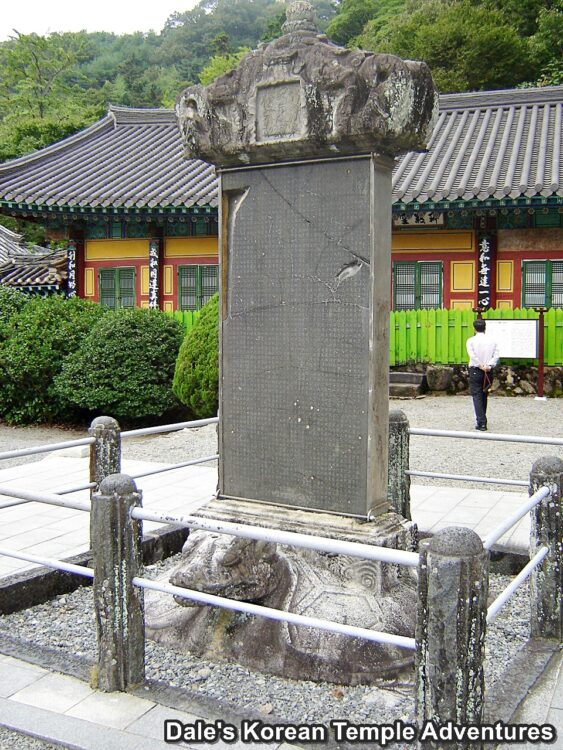Biseok – Stele: 비석
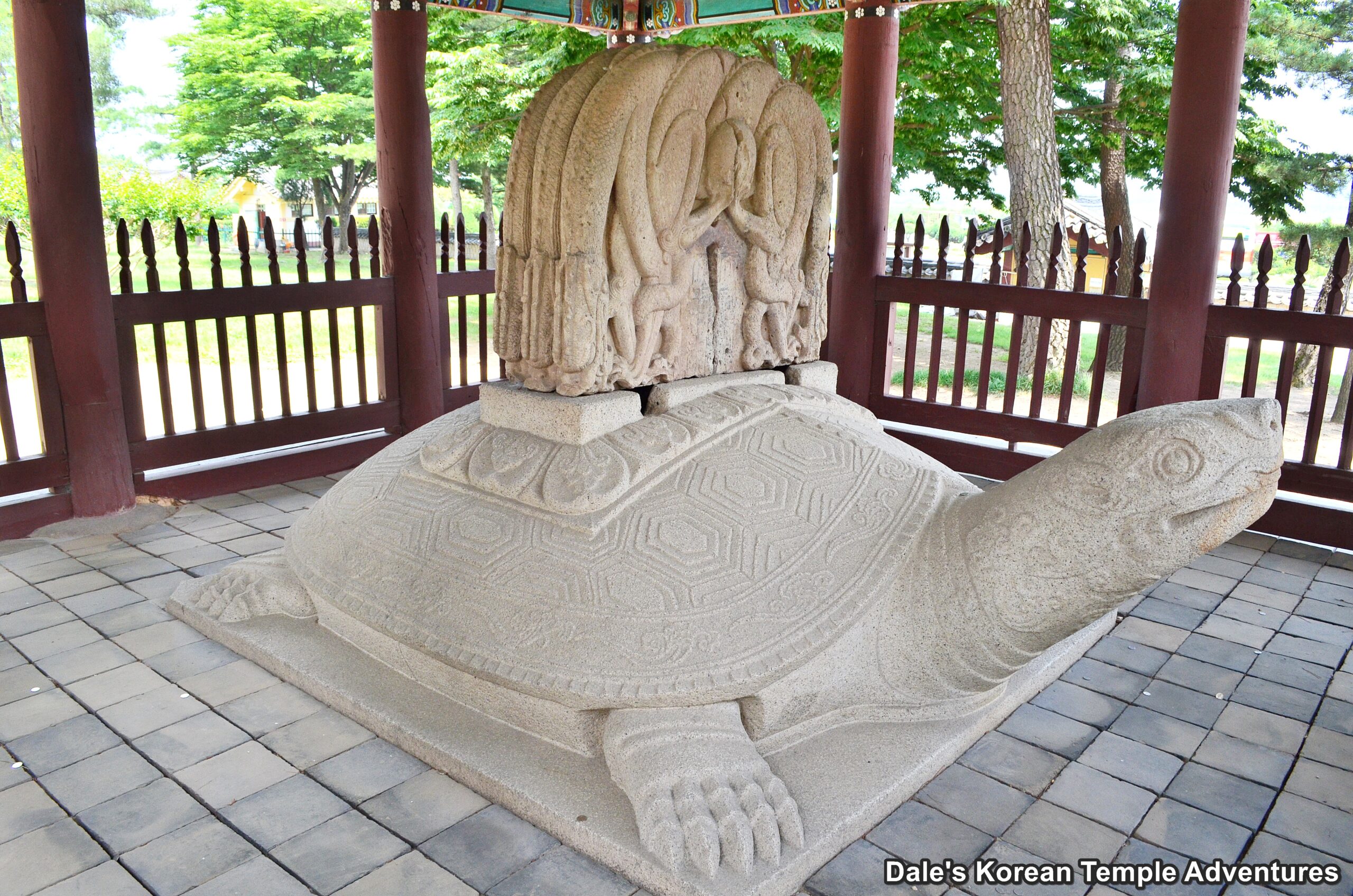
History and Design
A biseok, or stele, in English, is a rectangular piece of stone that stands as a monument for a deceased monk. The tradition of creating biseok started during the Three Kingdoms of Korea (57 B.C. – 668 A.D.). Stylistically, they are typically made up of three parts: the turtle base, dragon cap, and body with writing. The turtle is thought to be the longest living animal, which is meant as a metaphor for the longevity and legacy of the monk’s life and teachings; hence, the turtle base. The dragon cap, on the other hand, of the biseok is meant to symbolize the ability of the biseok to rise up so high that it can touch the skies. In turn, it’s a metaphor for the greatest of the monk’s life accomplishments. The gray or white body of the biseok, however, is the most important part of the stone structure, as it describes the monk’s lifetime accomplishments. Historically, they were written in Hanja; but more recently, they are written in Hangeul.
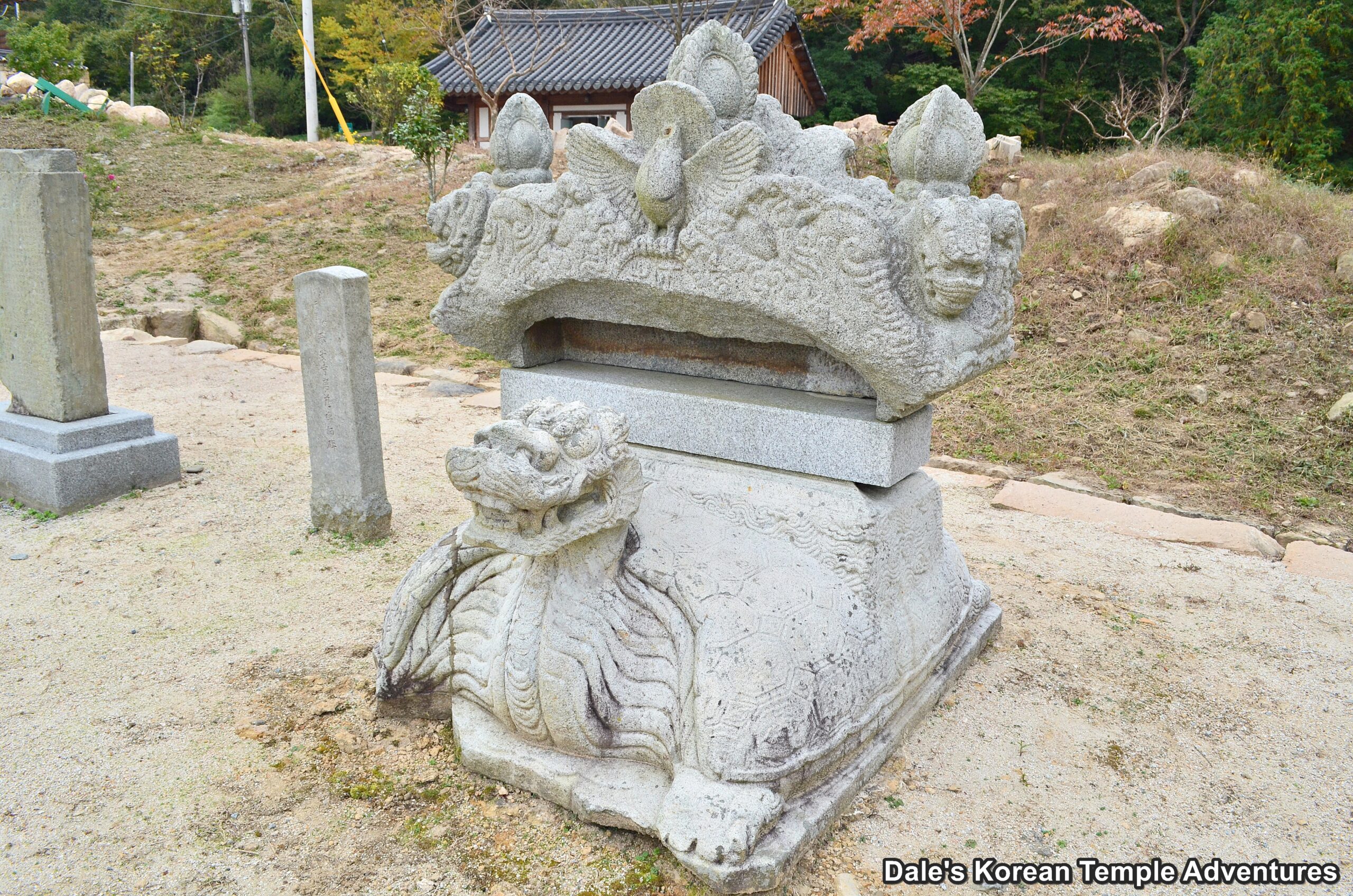
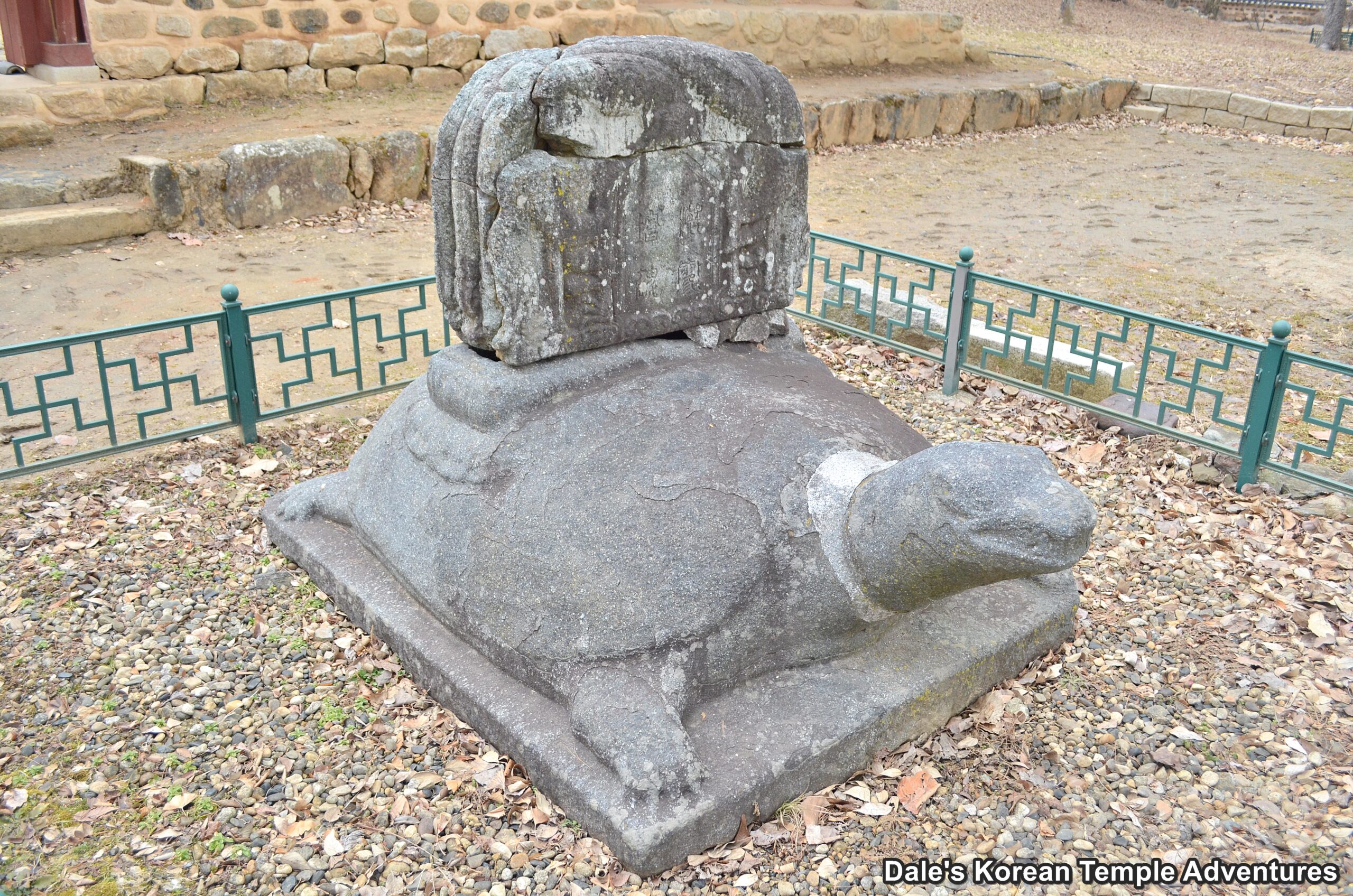
Samyeong-daesa’s Stele
In total, there are eight biseok that are National Treasures, and an additional sixty-nine that are Korean Treasures. While I thought about writing about the amazing Stele of King Muyeol in Gyeongju, which is National Treasure #25, or the Stele of Master Jingam at Ssanggyesa Temple, and National Treasure #47, or any of the national treasures for that matter, I decided to write about a lesser known biseok: the biseok dedicated to the warrior monk, Samyeong-daesa (1544-1610). This stele is Treasure #1301. The biseok is located on the Haeinsa Temple grounds in Hapcheon, Gyeongsangnam-do at Hongjeam Hermitage. Samyeong-daesa, who is also known as Yujeong (his ordination name), took over the leadership of the Righteous Army after his master, Seosan-daesa (1520-1604), retired from the Righteous Army due to age. Samyeong-daesa became known for his great wartime achievements defending the Korean peninsula from the invading Japanese during the Imjin War both in 1592 and during the second wave in 1597. Hongjeam Hermitage was given to Samyeong-daesa by King Seonjo of Joseon (r. 1567- 1608) out of respect and appreciation for all that the warrior monk had done. Samyeong-daesa spent the last remaining years of his life at Hongjeam Hermitage, where he eventually died. The name of the hermitage, which was named by King Gwanghaegun of Joseon (r. 1608-1623) in 1608, is a play upon Samyeong-daesa’s posthumous name: Jatong Hongje-jonja.
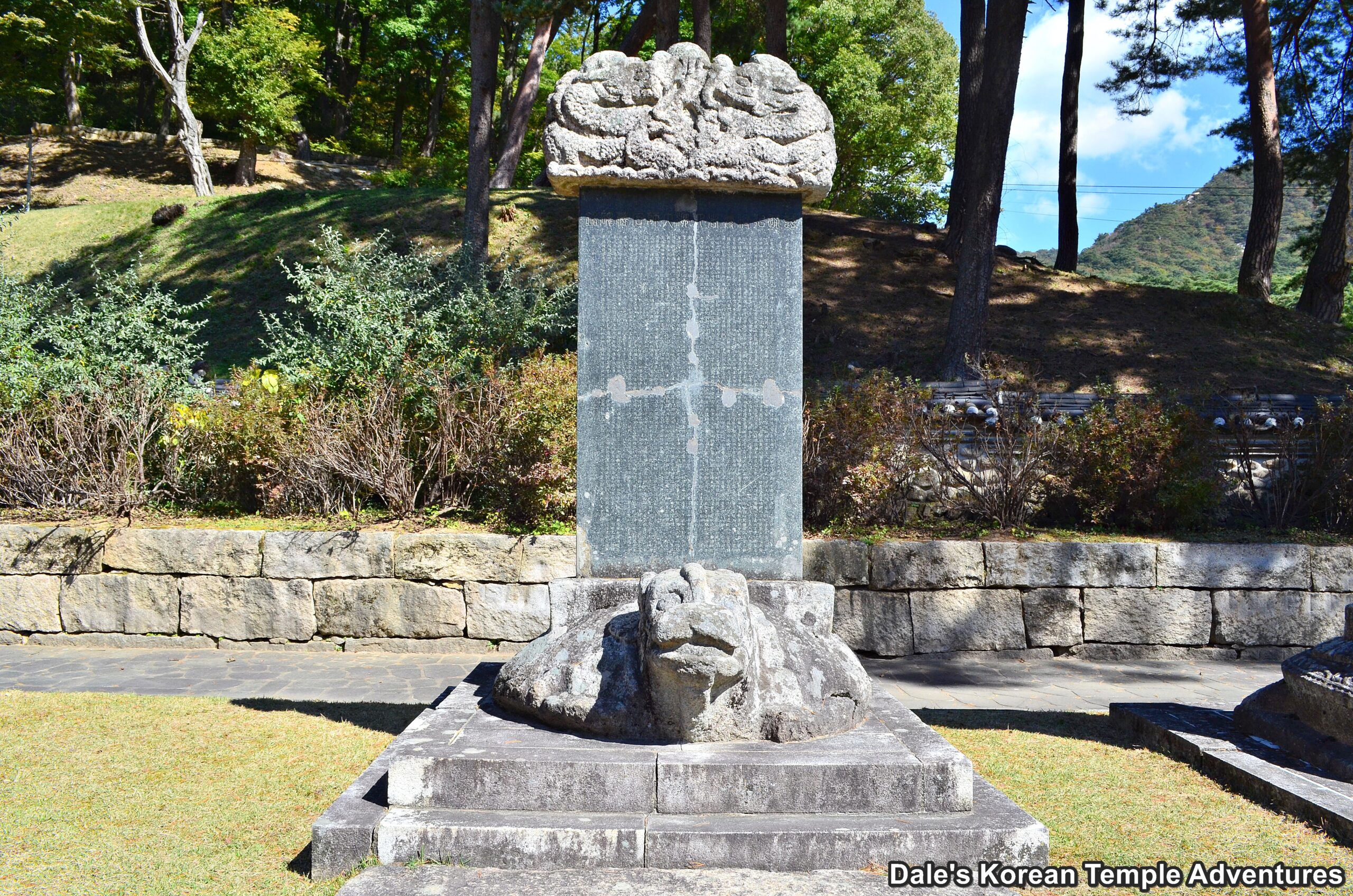
As for the biseok itself, it was erected in 1612, and the text on the body of the biseok was written by Heo Gyun (1569-1618) the famous politician, poet, novelist, scholar, and writer who wrote “The Tale of Hong Gil-dong.” For over 300 years, the stele stood until 1943, when the Japanese colonial administration ordered the police force in Hapcheon to dismantle, and then eventually destroy it, on the pretense that the writing on the body of the biseok was inflammatory. The excuse given was that the writing on Samyeong-daesa’s biseok could incite nationalistic fervor in Koreans if they read it. The body of the biseok is inscribed with the accounts and accomplishments from Samyeong-daesa’s life. Eventually, the biseok was destroyed by the police chief of Hapcheon. Samyeong-daesa’s biseok was finally found in 1958 in four separate pieces. Repaired, it was placed back on the original site it had formerly stood for over three hundred years. The biseok is the oldest known stone artifact dedicated to Samyeong-daesa.
Stele are more common to find at older Korean temples and hermitages. So the next time you’re at one, have a look for this highly sacred shrine that’s filled with hallowed and symbolic meaning.
